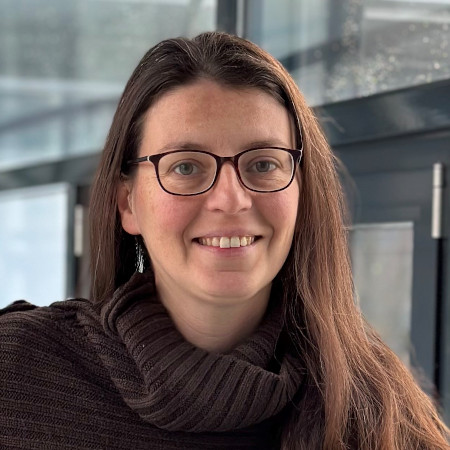“Through innovation, we utilize the entire value chain of the pea”
Jochen ReifProfession:
Doctor of Agricultural Sciences
Position:
Head of the Leibniz Institute of Plant Genetics and Crop Plant Research (IPK) department at IPK Gatersleben and professor at Martin Luther University Halle-Wittenberg.

Profession:
Doctor of Agricultural Sciences
Position:
Head of the Leibniz Institute of Plant Genetics and Crop Plant Research (IPK) department at IPK Gatersleben and professor at Martin Luther University Halle-Wittenberg.

Saxony-Anhalt wants to become a “center of the pea bioeconomy”. A research consortium led by Jochen Reif is laying the groundwork for this.
Legumes such as peas are known to be rich in protein and can replace animal proteins in food and animal feed or expensive soy imports. Saxony-Anhalt is therefore focusing on peas as a crop of the future and is striving to become a “Center for Pea Bioeconomy”. In the “DiPisum” project, a team led by project coordinator Jochen Reif aims to bundle the region's strengths on a broad scale over the coming years and tap into the potential of the pea by utilizing all innovations along the value chain.
Why is Saxony-Anhalt focusing on the pea as the crop of the future?
At a time when healthier and environmentally friendly diets are being sought, legumes are becoming increasingly important. Among the available grain legumes, peas are best suited to the climate and soil conditions in Saxony-Anhalt. As legumes, they are able to bind nitrogen from the air, which reduces the need for fertilizers. In addition, the cultivation of peas loosens up tight cereal crop rotations. This promotes soil health and makes a significant contribution to more sustainable agriculture. Peas are also healthy and an excellent source of functional vegetable protein.
What is the DiPisum project about? What is the focus of the project?
In order to establish the pea as a crop of the future for Saxony-Anhalt and beyond, the entire value chain must be taken into account. The DiPisum project therefore combines expertise from plant breeding, plant production, processing and marketing. The project benefits from the extensive biodiversity of the pea, which is preserved in Europe's largest gene bank, the IPK Gatersleben. DiPisum focuses on innovative approaches in plant breeding as well as in the cultivation and processing of peas and aims to ensure that these innovations are also implemented in practice and widely used.
What technological innovations does the project rely on to unlock the potential of the pea and make it usable for future nutrition? What role does the Leibniz Institute of Plant Genetics and Crop Plant Research (IPK) play in this?
A key technological innovation that is revolutionizing plant breeding is the ability to read out information on genetic material at low cost. This opens up new opportunities to make pea breeding more efficient and faster. This development is particularly important in order to protect the pea from pathogens and drought stress, for example. The IPK is the place where the sequencing of cultivated plants with large genomes was first successfully implemented worldwide. We would like to build on this and develop a comprehensive genomic toolbox for pea breeding.
DiPisum was designed in 2024 and will run in the first funding phase until 2028. What are the most important findings so far after a year of project work?
It usually takes more than a decade for innovations in breeding, production and processing to take full effect. We are therefore very grateful to politicians and citizens for the long-term funding option - a second funding phase has already been promised after the first. The motto of the first year of the project can best be summarized as “What belongs together grows together”. The first pea-based sausage alternatives, which were not only offered at this year's Green Week, certainly contributed to this productive cooperation.
To what extent can the project contribute to strengthening the regional economy in Saxony-Anhalt and what challenges are there?
DiPisum strives to enable high regional value creation through innovation. Existing markets are to be expanded and new markets developed, which should contribute to the creation of jobs in breeding, agriculture and the food industry in the long term. However, success depends largely on a return to traditional values, in which nutrition was strongly characterized by vegetable protein.
Interview: Beatrix Boldt


